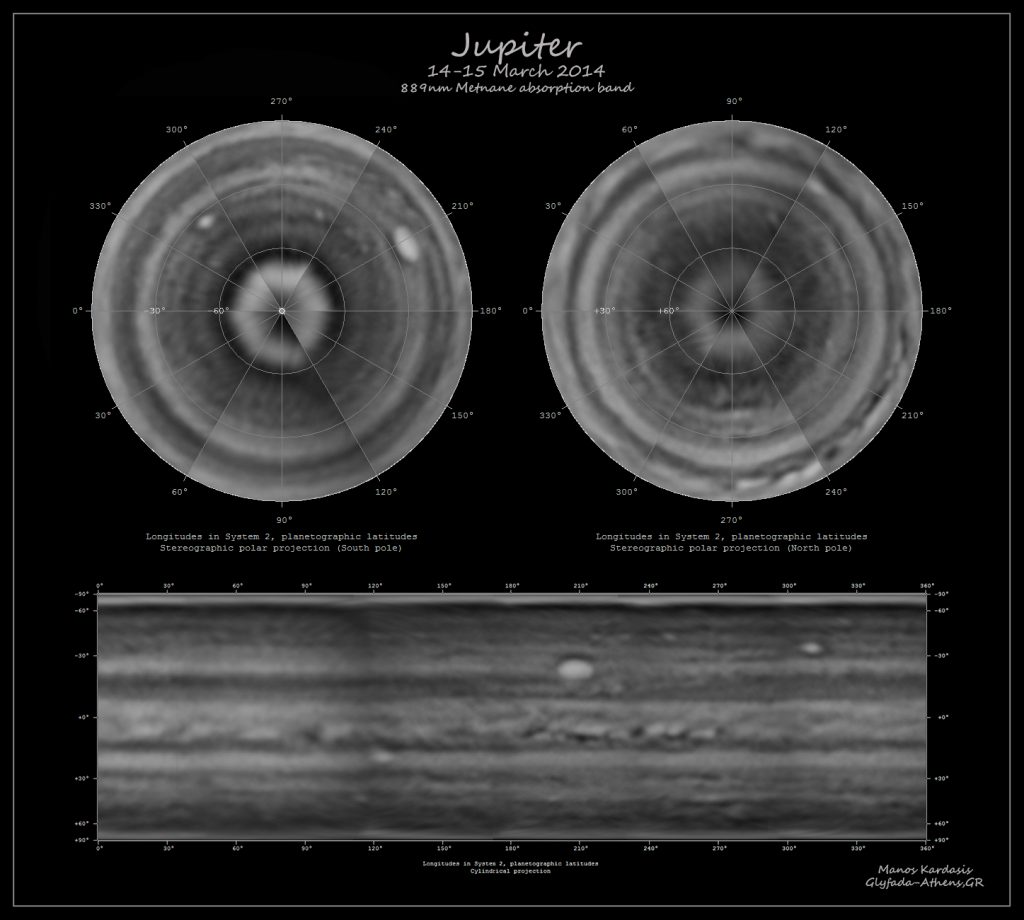Jupiter maps (March 2014) and Methane absorption 889nm band report
Polar caps: Both caps look bright, the south cap is brighter, and the north cap more extended than the south cap.
SSTB: The white Ovals look bright. The oval between and north of A3 & A4 ovals(“Mickey mouse”) is still bright but less bright than at its discovery on Non 9th. The shape looks like it is more extended now.
STB: Oval BA is very bright. The “STB ghost” is a methane-dark formation. The material interacting with Oval BA is methane-dark too.
SEB: Most of the visually bright features are methane bright also. Some methane-bright plumes are visible on the rifted region F of the GRS. The interacting area between the “light patch” and the GRS is quite methane bright.
EZ: A methane-bright zone with dark sectors mainly in the middle.
EZn-NEBs: A very active area with about 10 dark projections (dark-blue in RGB) associated with bright areas on the F side. The most active area is in the middle-right of the map (associated with NEB rifted region).
NEB: Is mainly dark with some bright areas in the rifted region. NEBn is bright and hosts Spot Z (former WSZ) which is very methane-bright since the start of this apparition.
NTrZ: Is bright in all its length. NTB-NTZ: The NTBs edge (which is pale orange in visible light) is also methane-bright but the rest is quite dark. In L2=145-210 there is a great disturbance in the NTBn-NTZ mainly dark in the P side. In the center there are some brighter regions and a small methane-bright spot in a rift is visible at +29, L2=165. At L2= 250 & 270 there are two dark barges. In NTZ at L2=47 there is a very methane-dark spot, which has been visually very dark since early March.
NNTB: It is not clearly separated from North Polar Region. It is mostly dark, but a very dark sector is present at L2=315-365.
NNTZ: LRS-1 is very bright and there is a dark sector P-F and south of it.There is another bright spot at L2=200.
NPR: There are some bright and dark areas.
Thanks to J.Rogers for making comments. For more 2013-14 reports on Jupiter please visit: http://www.britastro.org/jupiter/2013_14reports.htm


